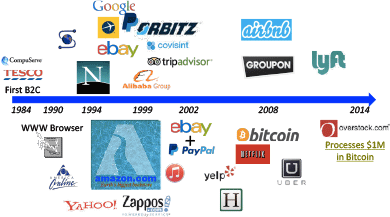 You may be aware that CIMdata has been hosting a series of educational webinars. We have seen record attendance and many of the past webinars are available for replay from the CIMdata on-Demand page of our website. I recently hosted a webinar on IoT which generated lots of questions that we did not have time to answer live and and I am working my way through them. Here are a few. For those of you who were unable to join the webinar you can watch it here.
You may be aware that CIMdata has been hosting a series of educational webinars. We have seen record attendance and many of the past webinars are available for replay from the CIMdata on-Demand page of our website. I recently hosted a webinar on IoT which generated lots of questions that we did not have time to answer live and and I am working my way through them. Here are a few. For those of you who were unable to join the webinar you can watch it here.
Watch this space.
Stan
Convenience versus security is always a debatable point for emerging technologies like IOT / Cloud computing. How is IOT going to handle this?
We mentioned standards. Many have a strong security component. Device level security is paramount. There is always encryption and stripping off identifying data. If users have to do much it is not going to work. I think are going to learn a lot about IoT from wearables. They have to be simple to use, connect seamlessly, and will have tons of personal information that insurance companies would love to have.
Analytics within one company is a big issue. What about doing this across companies, customers, etc?
Companies already have business relationships that do include some data sharing. It is doubtful that many have the rules in place for this new IoT economy.
There will be a lot of issues around data sharing and privacy. We know it is already happening with our personal data, with connections between Amazon, Facebook and others helping people connect the dots of our lives. Many approaches strip the IoT data of identifying information, but with all the sources people will be able to make connections.
Do you see a correlation between the capability of PLM systems to support cloud environments and their capability to support IoT approaches?
Cloud can be enabler of IoT, but with the broad definitions of private cloud (which we mostly used to call hosted) many can support this new requirement. As I tried to say in the Webcast, the IoT is a whole other kettle of fish. Many industrial companies are currently struggling to manage software as part of their product definition. Now they have to manage a network of smart, connected devices. It will be a big step for many. And PLM solution providers, in general, do not have fully formed strategies , technologies, and relationships to support all of this (outside of PTC at present).
Do you see any linkage with PLM on Cloud and IOT? Does the PLM Cloud business going to have any impact with this?
Similar question. I would say it can be linked but it does not have to be. Outside of a few providers, there is not much PLM cloud business at present (we guesstimated it at less than $100 million, unless Oracle has significant PIM revenue on the newly christened Oracle Cloud.
The scope of IoT is like the scope of PLM: expanding in all directions. Do you think that the "PLM world" is ready for robust integration when we have challenges to migrate data from one system to another for instance?
That was part of the point of my presentation. I think by and large the PLM Economy is not ready for it. PTC has made some big investments. SAP has some good pieces. Most of the providers are talking about smart and connected, but as I said above, many are struggling with smart.
How do you think the added emphasis on Systems Engineering will affect PLM?
It better. We are talking about systems of systems here. These devices will have to understand their ambient environments to play their role in the system. It can potentially get really complex really fast.
How is it different from integrating ALM(Software), ECAD to PLM(MCAD)?
Actually, with approaches like PTC ThingWorx and others, it should be much easier. You can model the behavior and not have to do much code. Now you have to be good at doing the software part of the “product/thing” to have something that these codeless platforms can write for.
Many Product Development companies around the world have already outsourced their IT Department. Will this be a hurdle in implementing IoT efficiently in such companies?
It depends on if IT gets involved in the decision. For many companies IoT stuff should remain close to the lifecycle processes, like design, manufacturing, and support. Some people may have outsourced this stuff, and it could have an impact if they do. But as I said above, the tools are pretty codeless for some use cases.
And lastly a softball question for the day:
What does CIM in CIMdata stand for?
Thanks for asking. It stands for Computer Integrated Manufacturing, a vision developed and promoted in the early 1980s when CIMdata was formed. Actually, this relates to IoT because you could argue that Industry 4.0 could help finally achieve that vision (and much more of course).
Follow Stan @smprezbo
Subscribe to our RSS feed to have future blog postings delivered to your feed reader.







